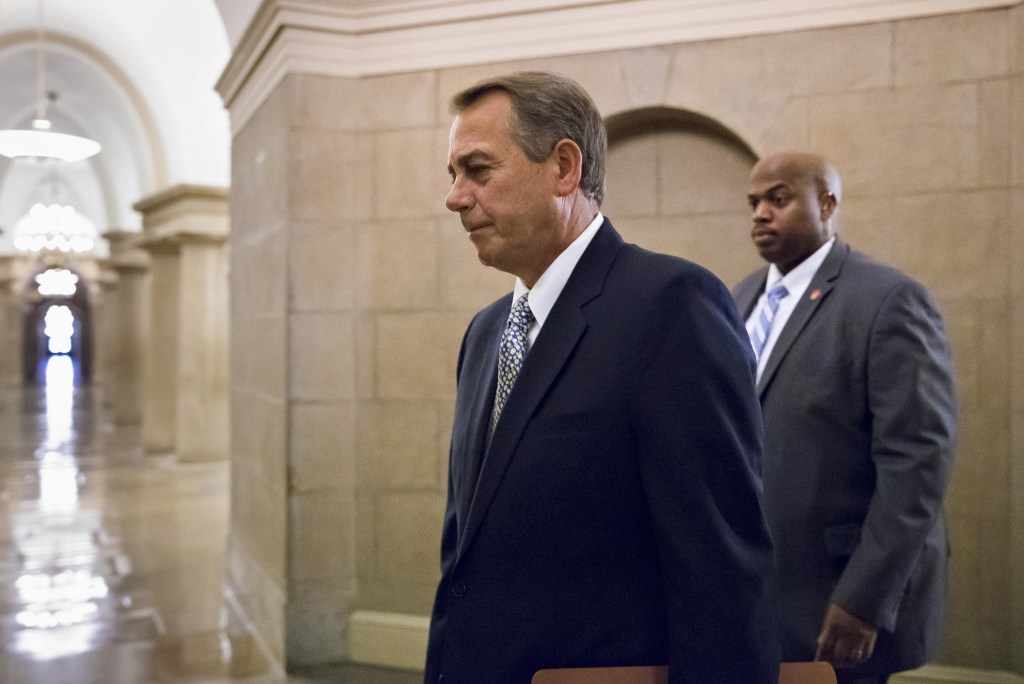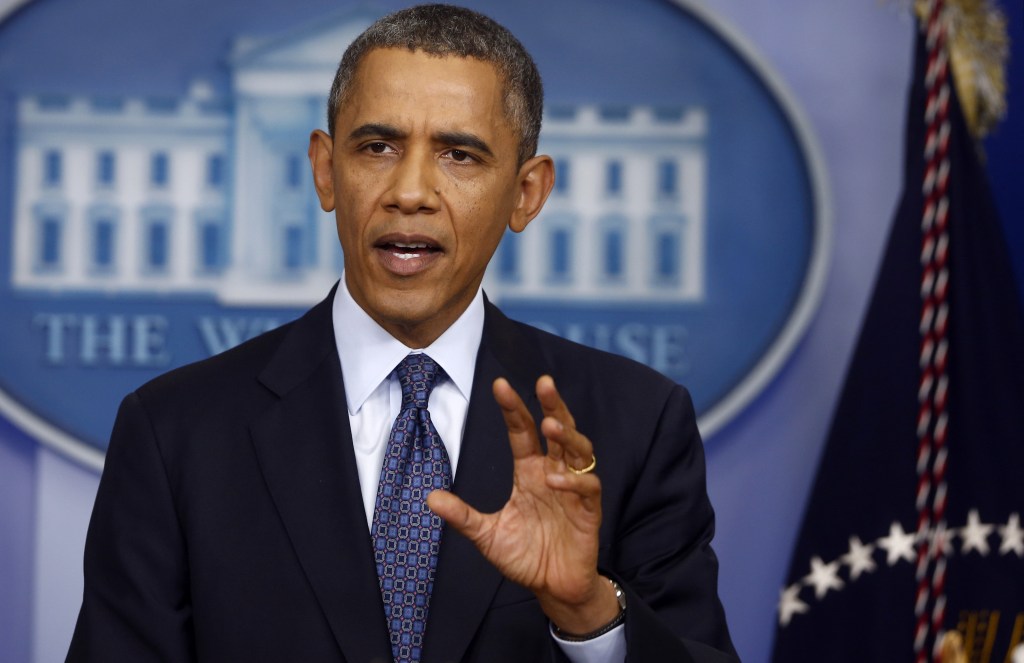WASHINGTON — Hard-line House Republicans are dismissing dire warnings that a government default would wreck U.S. and world economies as another case of hyperbole from an Obama administration that cried wolf about the likely impacts of automatic spending cuts and partially shutting down the government.
Egged on by the GOP, Democrats have agreed to so many exemptions to the shutdown — from letting most Defense Department employees return to work to supporting full back pay for furloughed workers — they’ve mitigated much of the pain. Some conservative activists gleefully say they have shown that Americans can live without agencies Republicans like the least, such as the Environmental Protection Agency and the Internal Revenue Service.
In the House, conservatives now are challenging Treasury Secretary Jack Lew’s insistence that on Oct. 17 the United States will no longer be able to borrow, making a first-ever government default imminent.
“I don’t think we’re ever going to default,” said Rep. Dennis Ross, R-Fla. “We’ll always service our sovereign debt.”
Not true, says Lew. He says there is no option to prevent default “if we don’t have enough cash to pay our bills.”
While Treasury expects to have $30 billion of cash on hand on Oct. 17, that money will be quickly exhausted in paying incoming bills, given that the government’s payments can amount to $60 billion on a single day, Lew said.
A sober analysis from Goldman Sachs, the banking, securities and investment firm, said Treasury’s cash balance could be depleted on any day after about Oct. 25. “At that point, it is possible that the Treasury would need to cease making payments in order to conserve the little remaining cash they would still have on hand,” the analysis said.
Some of the more conservative Republican House members don’t buy it.
“There’s no way to default,” Rep. Justin Amash, R-Mich., said Tuesday. “There’s enough money coming into the Treasury to pay interest and to roll over principal.”
A default might delay Social Security checks, benefits for military veterans and Medicare reimbursement to doctors. The last time congressional inaction posed the threat of default, in summer 2011, Treasury officials considered delaying payments due a particular day until enough incoming revenue was on hand to cover all of them for that day. Noting that the government then made some 80 million payments a month, officials said the payment delays would worsen daily.
Democratic Sen. Chuck Schumer of New York castigated the “debt ceiling deniers,” saying they fail to recognize that the economic crisis from a default would be worse than 2008 when the financial upheaval plunged the country into the worst economic downturn since the Great Depression of the 1930s.
Democrats made it easier for Republicans to question a default’s impact because their earlier warnings about across-the-board spending cuts and the partial shutdown proved exaggerated.
The partial shutdown never came close to being a true shutdown. From the start, certain services such as air traffic control continued while Social Security, Medicare and Medicaid payments remained on track. Many thousands of workers deemed “essential” stayed on the job. Congress also voted to keep 1.4 million active-duty military at work, with pay.
Then on Saturday — the fifth day of the shutdown — two major decisions further reduced its impact. The Defense Department ordered nearly all of its 350,000 furloughed civilian employees back to work. That was a huge chunk of the estimated 800,000 federal workers on furlough nationwide. And the House voted unanimously to pay all furloughed employees for the time they miss, effectively giving them a mandatory paid vacation. The future of the back pay measure is uncertain in the Senate — no vote has been scheduled — but President Barack Obama supports it.
Furloughed workers, just like most of those still working, won’t see that retroactive pay until the government is back into full operation. To the degree they can’t pay rents, mortgages and other bills, or quit going to restaurants, the economy could suffer. But that hasn’t been felt yet on a nationwide scale.
In terms of eventual government spending, the partial shutdown is so partial that it probably will add to the federal deficit rather than shave it, some economists say.
Some Democrats and independents agree that exempting certain agencies and employee categories from the shutdown might make it easier to keep the other portions closed for weeks, or even months.
“Certainly we want to mitigate whatever impacts we can,” said Sen. Angus King, a Maine independent who caucuses with Democrats. But it makes the partial shutdown “more tolerable,” he said, “and the problem is, it becomes a selective problem. Some people don’t suffer the effects, and others get hammered. It’s sort of the lifeboat approach: who gets in, and who doesn’t.”
The partial closure comes as agencies also deal with the automatic, across-the-board budget cuts known as sequester. The administration, led by then-Defense Secretary Leon Panetta, repeatedly warned that cuts that went into effect on March 1 would have a debilitating effect on government operations, with the possibility of “hollowing out” the military.
So far, people outside the military community haven’t noticed. Many lawmakers now embrace the sequester cuts as an acceptable approach to trimming spending.
“When you’re in the fifth year of Chicken Little … folks do not believe the president on this,” Rep. Tim Huelskamp, R-Kan., said of Obama’s tenure in the White House.
The partial shutdown, wrote conservative blogger Erik Erickson, shows that “life will go on. Americans will see they really can get along without Washington’s constant, daily interference in their lives.”
Send questions/comments to the editors.




